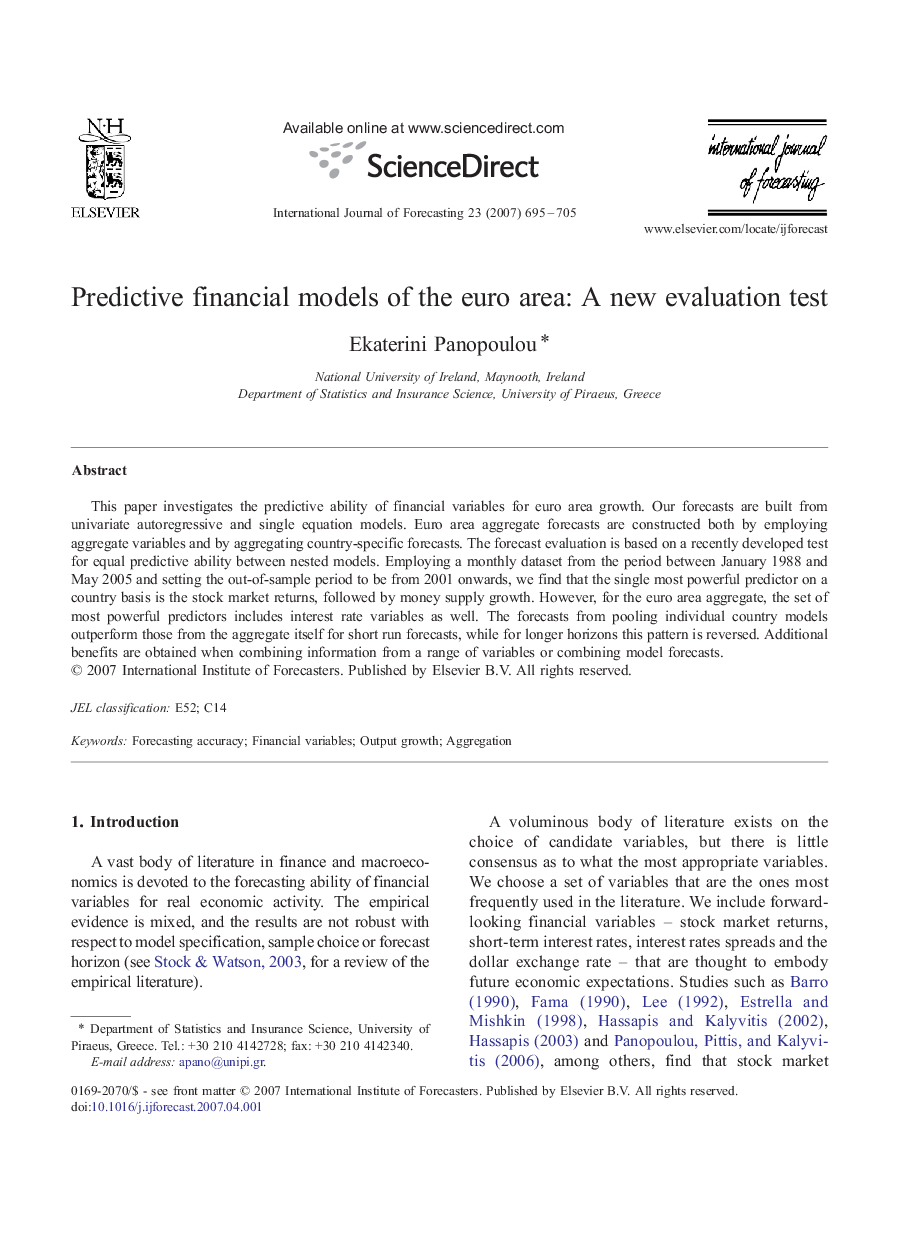| Article ID | Journal | Published Year | Pages | File Type |
|---|---|---|---|---|
| 998484 | International Journal of Forecasting | 2007 | 11 Pages |
This paper investigates the predictive ability of financial variables for euro area growth. Our forecasts are built from univariate autoregressive and single equation models. Euro area aggregate forecasts are constructed both by employing aggregate variables and by aggregating country-specific forecasts. The forecast evaluation is based on a recently developed test for equal predictive ability between nested models. Employing a monthly dataset from the period between January 1988 and May 2005 and setting the out-of-sample period to be from 2001 onwards, we find that the single most powerful predictor on a country basis is the stock market returns, followed by money supply growth. However, for the euro area aggregate, the set of most powerful predictors includes interest rate variables as well. The forecasts from pooling individual country models outperform those from the aggregate itself for short run forecasts, while for longer horizons this pattern is reversed. Additional benefits are obtained when combining information from a range of variables or combining model forecasts.
